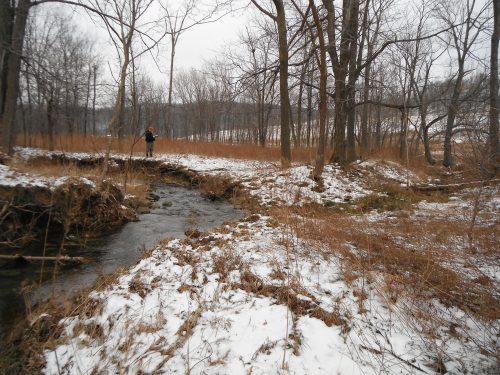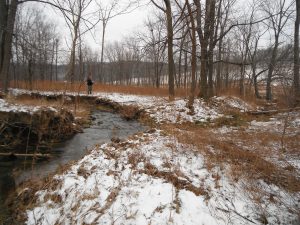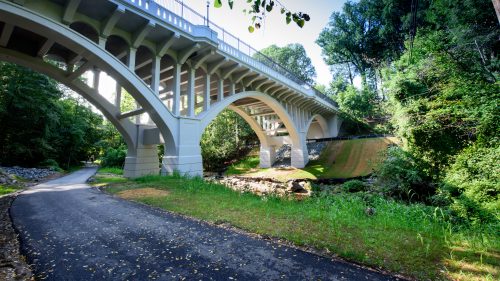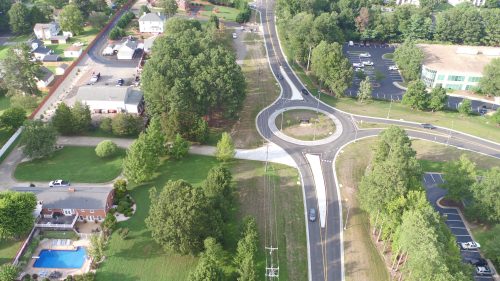Restoration of Tributary to Raystown Branch of Juniata River
Restoration of Tributary to Raystown Branch of Juniata River
When the Pennsylvania Turnpike Commission (PTC) began planning for a roadway reconstruction project within a mountainous region of Bedford and Somerset counties, it knew impacts would need mitigating. PTC looked for innovative ways to restore more than 3,500 linear feet of stream and 10 acres of high-quality floodplain wetlands.
The Commission selected JMT to provide stream and wetland restoration design, mitigation, and permitting services, effectively restoring an unnamed tributary to the Raystown Branch of the Juniata River. We determined that the existing perennial stream, which runs dry in the summer due to its perched condition, was completely disconnected from the groundwater aquifer due to several feet of clay caused by an historic milldam. Remnants of the milldam were present within the project site and included the dam crest and millrace.
JMT’s design restored the stream and valley bottom to a pre-European settlement condition using only natural materials found on site, a significant savings in construction cost compared to conventional restoration practices. The project also reconnected the proposed streambed to the groundwater aquifer, enhancing hyporheic exchange and maintaining base-flow throughout the entire year. The restoration design focused on improving water quality; decreasing sedimentation; recharging groundwater and hyporheic exchange; improving hydraulic efficiency; establishing equilibrium with the available sediment supply; and improving in-channel and riparian ecological and biological function.
JMT also conducted an extensive hydrologic investigation, quantifying runoff delivered to the site, as well as monitoring the ground water elevation through a series of wells and observation trenches to characterize subsurface groundwater conductive layers. This information was used to design an offline pasture-stock watering system, which allowed the land owner to conduct livestock operations without interfering with the restored stream. The project limits were placed in a permanent conservation easement, and JMT designed a fencing system to protect that easement. We provided permitting and regulatory agency coordination with the Pennsylvania Department of Environmental Protection, following special program guidance for stream and wetland restoration projects that identify and remove past anthropogenic impacts and restore self-sustaining ecosystems.
Through stream and floodplain restoration, JMT helped re-establish a diverse valley-bottom ecosystem that had been buried by several hundred years of sedimentation.




